|
Bridgend (Welsh: Pen-y-bont ar Ogwr) is a town in the County Borough of Bridgend in South Wales. It is midway between Cardiff and Swansea. The river crossed by the original bridge which gave the town its name is the River Ogmore but the River Ewenny also passes to the south of the town. Historically a part of Glamorgan, Bridgend has greatly expanded in size since the early 1980s and now has a population of around 40,000.
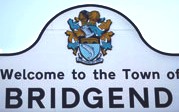
History
Prehistoric and Roman
Several burial mounds have been found in the vicinity of Bridgend suggesting that the area was settled before Roman times. The A48 between Bridgend and Cowbridge has a portion, known locally as "Crack Hill", a Roman road. The Vale of Glamorgan would have been a natural low-level route west to the Roman fort/harbour at Neath (Nidum) from settlements in the east like Cardiff and Caerleon
(Isca).
The Norman invasion
After the Norman conquest of England in 1066, the new establishment looked westwards in the following decades to create new seats for lords loyal to William The Conqueror. Groups of Norman barons arrived in Wales and in the south and east created what would later become the Welsh Marches, while the north and west remained largely unconquered due to the harsh terrain.
At Coity, the local chieftain Morgan Gam already had a stronghold. Sometime in the 11th century Norman Lord Payn de Turberville approached Morgan to turn over control of the Coity Castle to de Turberville but only if he (de Turberville) either fought Morgan for the land, or took his daughter Sybil's hand in marriage. Turberville married Sybil and became Lord of Coity, rebuilding the castle.
In 1106, Newcastle Castle (on Newcastle Hill, overlooking the town centre) and Ogmore Castle(1116) were built by Robert Fitzhammon and William de Londres
respectively. About 2 miles north-east of Ogmore Castle, Maurice de Londres founded the fortified BenedictineEwenny Priory in 1141.
These three castles provided a "defensive triangle" for the area. (A quadrilateral if you include Ewenny Priory.)
Early development
Bridgend itself developed at a ford on the River Ogmore, which was on the main route between east and west Wales. Just north of the town, there is the confluence of three rivers, the River Ogmore, the Llynfi River and the Garw River. South of Bridgend the River Ewenny merges with the River Ogmore and flows into the Bristol Channel. In the 15th century, a stone bridge was built to connect permanently each side of the River Ogmore (later rebuilt). Originally this bridge had four arches but in the 18th century a massive flood washed two of them away. The rest of the bridge still stands and still remains a focal point of the town, with aesthetic restoration taking place in 2006.
Bridgend grew rapidly into an agricultural town important to many of the local farmers. Although still small by today's standards it became an important market town, a tag that remained with it until well into the 20th century.
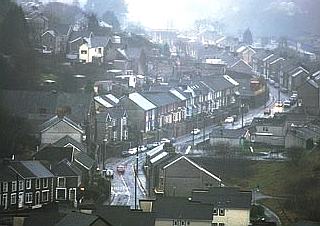
The industrial era
The discovery of coal in the valleys north of Bridgend would have a massive impact on the town. The first coal mines opened north of Bridgend in the 17th century, with the Llynfi Valley being the first to be industrialised. Bridgend itself never had coal and remained a market town for some time, but the valleys of the three rivers grew into an important part of the South Wales coalfields. Ironworks and brickworks (notably at Tondu) were also established in the same period, by John Bedford, although the ironworks faltered after his death and ceased operating entirely in 1836.
The Great Western Railway arrived and Bridgend was at the junction between the main London to Fishguard line and the branch to the three valleys. Coal trains regularly sent coal down the valleys and with the opening of the Vale of Glamorgan railway,
coal could be sent directly to port at Barry or through other branch lines to Porthcawl.
Bridgend itself saw several quarries open in and around the town centre, the remnants of which, (near Brackla) can still be seen today. An engine works was opened in the town and a larger farmers' market also opened in the town centre, where it remained until at least the middle of the 20h century.
In 1801, the population of Bridgend County was around 6000. By the beginning of the 20th century this had risen to 61,000. By this time Bridgend was a bustling market town with prosperous valleys to the north, a thriving community and good links to other towns and cities.
The Second World War
Bridgend played an important part during the Second World War. It was home to a prisoner of war camp at Island Farm and a large munitions factory (ROF Bridgend — known as the "Admiralty") at Waterton, as well as a large underground munitions storage base at Brackla (known as the 8 xs). This was an overspill of the Royal Arsenal, Woolwich.
At its peak the Arsenal had 40,000 workers, many of them women. Large numbers of them were transported by bus from the Rhondda and the valleys. At the time the Arsenal was the largest factory (employee-wise) ever in the UK.
The factory complex had three sites in Bridgend, all linked together by a huge network of railways. There are many reminders of the factory sites left to this day Brackla Ordance Site.
In 1945, seventy prisoners of war from Island Farm managed to escape through a tunnel although all were recaptured. While Bridgend was as important during the war as any other part of Wales, and although it was photographed by the Luftwaffe, it was never "blitzed". This was largely due to the area's air pocket, which made bombing extremely hazardous for incoming planes. The close proximity of the P.O.W. camp at Island Farm may have been something of a deterrent as well. Unlike Bridgend, both Swansea and Cardiff did not escape such massive attacks but the area immediately around Bridgend did suffer
bombing raids. Had Bridgend been bombed it would have likely been a massive blow to munitions supplies to the allies and could have changed the course of the war in the Axis' favour.
The Admiralty ceased full scale production in December 1945 after 5 years. Two of the munitions storage magazines in the Brackla ROF site were converted to a RGHQ (Regional Government Headquarters) during the Cold War as part of the UK continuity of government plans. It is now in the hands of a private company. See Subterranea Britannica for more information on the Brackla
RGHQ.
Post-war
Bridgend remained a solid market town after the war. In 1948, Newbridge Fields (a short distance from the town centre) hosted the 1948 National Eisteddfod.
In 1960, the River Ogmore burst its banks and flooded the town centre. Subsequent floods and extreme weather led the Welsh Water Authority to develop concrete flood defence walls along the banks of the River Ogmore in the town centre. The town centre has not been flooded since. During this time Bridgend was chosen to become the headquarters for South Wales Police. This action was ideal as geographically, Bridgend stands equidistantly between both Swansea to the west and Cardiff to the east.
The Beeching cuts of the 1960s saw the loss of passenger rail links in the Vale of Glamorgan and to the northern valleys. The Vale of Glamorgan link to Barry via Rhoose was re-instated in June 2005.
In the 1970s, Bridgend would begin to see the catalyst of arguably its biggest growth period. The "missing section" of the M4 motorway was constructed around the town, plans were afoot to change the Waterton Admiralty into an industrial estate, and the water supply was improved including new sewage treatment works near Ogmore. Two major multinational corporations, the Ford Motor Company and Sony set up factories in, or on the outskirts of the new Bridgend Industrial Estate (former Waterton Arsenal).
During the 1980s with the development of the Brackla Housing Estate the future of Bridgend seemed bright.[citation needed] By the 1990s the estate had grown to become the largest privately-owned housing estate in Europe.[citation needed] Further new housing developments at Broadlands to the south-west of the town centre and the continuing expansion of Brackla to the north-east has caused Bridgend's population to swell dramatically. Due to this, traffic congestion and a lack of parking facilities within the town have become important issues in the area. In 1997 a new link road/bypass was built to link the town centre directly to the M4 motorway as well as redirect traffic around the town centre.
The closure of the Welsh coal industry brought mass-unemployment and social problems to the valleys to the
north. However, this led to a greater general standard of living for many in the areas previously dominated by coal mining but many of the problems stemming from unemployment, including drug-use and economic inactivity still remain
today. By the late 1980s all coal mines in the area had ceased operations and the former mine workers either commuted or moved to central Bridgend to work at the newly-developed industrial
estates. This was typical for much of South Wales which was at the time moving from a mining-based economy and into a new service, electronic, manufacturing and textile-based
one.
A new Securicor operated prison (HM Parc Prison) was built near Coity in the late 1990s. The prison opened in November 1997 and is the only private prison in
Wales.
The local council started a scheme to pedestrianise the town centre, which has been met with criticism by the traders and shoppers alike because of what they consider to be poor construction, design and
access. Excessive car parking charges as well as the dominance of UK retail giant Tesco in and around the area (two large superstores and one small convenience Tesco Express store) has led Bridgend to be jokingly called "a little town beyond Tesco" (cf Little England beyond
Wales).
Competition from Cardiff and Swansea in terms of retail choice and ease of access has led to the town becoming a less popular choice with local
people.
The construction of an award-winning new bus station in 2004 and a rethink to traffic movement around the town centre has seen a halt to the
decline. Local committees, together with the council started to use the pedestrianisation of the town centre to its advantage, cumulating in several popular fairs including Continental Markets, Celtic Festivals, a small Mardi-Gras and seasonal markets and events.
Future development
Bridgend is still seen by many as a "scruffy" town. Objective 1 investment in regeneration of some of the more untidy parts of the town has understandably been
welcomed. One scheme is to create a "riverside culture" by constructing a walkway along the River Ogmore near the old bridge, opening up the rear of properties facing the
river. £2million has been secured and it is hoped the scheme will be completed by
2009.
To counteract the dominance of Tesco in the area, ASDA has been given planning permission and have started building a new superstore near the town centre, opposite Bridgend College which is expected to open in 2008.[citation needed] At the nearby Brackla Street Centre, plans have been drawn up for a residential/retail mixed redevelopment. However a similar development was withdrawn a few years
ago.
Construction on a 1500-home sustainable "village" at Parc Derwen near Coity is due to begin
imminently. The scheme has been painstakingly planned and although there are concerns from Coity in particular, this may soften the urban sprawl that has affected Brackla and
Broadlands.
Ambitious plans for a 20000-seat stadium, hotel and railway station at Wern Ddu near the M4 motorway north of Bridgend and near Tondu have been
submitted. An equally ambitious scheme for a 650-home "Garden Village" of affordable housing, community facilities and distributor road to the north-west of the town has also been submitted by the same company, Keyworker
Homes. It is highly unlikely either of these projects will be given the go ahead due to the lack of top-level sport in the area, comparable facilities in nearby Swansea and Cardiff, flooding risk, and that the latter development is on green-belt
land.
Politics
The local Member of Parliament is Madeline Moon MP (Labour), the Welsh Assembly Member for Bridgend is Carwyn Jones AM (Labour) along with regional AMs (South West Wales) Alun Cairns AM (Conservative), Dai Lloyd AM (Plaid Cymru), Janet Davies AM (Plaid Cymru) and Peter Black (Liberal Democrat).
Economy
Bridgend and nearby Neath Port Talbot recovered quickly from the decline of traditional industries, particularly coal-mining due to other alternative forms of employment. Wages are generally higher here than in other parts of the South Wales valleys. There are large industrial estates at Bridgend and Waterton (formerly Waterton
Admirality) which host a number of small scale and multi-national companies, mainly manufacturing. The biggest single employer (outside of the public sector) in the area is probably the Ford Motor Company's engine plant near Waterton after Sony's closure of the Bridgend plant and downsizing of the Pencoed plant. It is hoped other businesses will relocate to the sites. Other manufacturers to have pulled out of the area include Wrigley Company's. Job losses resulting from the closure of
RAF St Athan next year will also affect the town hard as many of the workers live in and around Bridgend.
There are successes, IT Consultancy Group LogicaCMG opened an office in Bridgend (which has since been expanded) and several companies have moved to new office complexes on the outskirts of Bridgend. German retailer Lidl has also set up its Welsh headquarters and distribution site at Waterton. Zoobiotic, a medicinal maggot therapy company has its facility near Bridgend town centre. Also, since 1983, famous dart board producer Winmau has based its global headquarters in Bridgend.
Bridgend (like Wales in general) suffers from a lack of high-wage service jobs, however the retail sector in particular provides a large proportion of employment in the town and borough.
Transport
Bridgend railway station has regular services to London & Cardiff Central railway station to the east, Swansea & West Wales to the west and Maesteg to the north. There are also services to Manchester and North Wales. Bridgend is the western terminus of the Vale of Glamorgan Line which reopened to passenger traffic in 2005.
Wildmill railway station, approximately 1 mile north of Bridgend railway station serves the estates of Wildmill, Pendre and Litchard and is on the Bridgend-Maesteg branch line. A park and ride station at Brackla, about 1.5 miles south-east of Bridgend railway station is planned and is due to be constructed once capacity improvements have been made to the South Wales Main Line. Services to a new railway station in Llanharan began in December 2007, with an official opening expected in February
2008.
Bridgend has a new bus station with regular buses to major urban and rural centres in South Wales although there has been recent damning criticism of the services, particularly on a Sunday. This has changed a little thanks to funding from the Welsh Assembly Government and Bridgend County Borough council with almost all areas of the town and its surrounding areas having an hourly bus service at least with most Sunday services running at an hourly
frequency.
There are plans for a new bus/taxi/train integrated transport system at Bridgend railway
station. Bus stops are found throughout the town. Bridgend has several licensed taxi-firms and taxis can be found near the bus and railway stations as well as taxi ranks in the town centre.
A new east-west cycle route has been constructed from Brackla through to Broadlands and into Cefn Glas. Most roads are safe enough to cycle on although at peak times, most areas near roundabouts in particular are hazardous without due care. Bridgend is on the National Cycle Route and there are off-road spurs from the Celtic Trail to the town centre and a community route in the Ogmore Valley. Glyncorrwg and the Afan Valley about 12 miles north of Bridgend near Maesteg is famed for its mountain bike trails, considered amongst the best in Europe.
For scheduled and charted air travel for the county, Bridgend is served by Cardiff International Airport, to which there are direct rail and bus services.
Education
Bridgend town has 2 (rival) comprehensive schools, Brynteg Comprehensive and Bryntirion Comprehensive. Brynteg generally serves the area east of the River Ogmore, while Bryntirion serves the areas west of the river. Brynteg is renowned for its rugby alumni, including several Welsh internationals but athletes in other sports have also attended like top women's cyclist Nicole Cooke. Bryntirion has also produced its fair share of talent, notably Gareth Llewellyn. Bryntirion also has a reputation in the area for the quality of its musical productions.
There are also 2 other comprehensive schools in the Bridgend area, Archbishop McGrath Comprehensive and Ynysawdre Comprehensive. The two schools are situated across from each other, and are fierce rivals in almost every aspect and also share a rivalry with Ogmore Comprehensive School.
There are at least 9 primary/junior-infant schools in the town.
There are also 2 special schools; Heronsbridge School which is linked with Brynteg Comprehensive school and at the back of Bridgend College. It is for students of a Primary school age and Comprehensive school age with severe learning disabilities. Another school, Ysgol Bryn Castell, offers education for Key stage 1-4 students with moderate to severe learning disabilities and is linked with Bryntirion Comprehensive school and has alos recently opened up a satellite unit at Cynffig Comprehensive school located a few miles west of Bridgend.
Bridgend College is the town's further and higher education provider which primarily offers vocational courses, access courses, GCSEs and A-Levels. It attracts school-leavers from as far as Swansea and Cardiff. It offers a range of higher education courses such as PGCE, HNC and HND in various subjects and masters programmes on its Queens Road campus on Bridgend Industrial Estate. These are mainly franchised from the University of Glamorgan and UWCN (University of Wales, Newport). There is also the Pencoed Campus with a focus on Sport, Agriculture and Horticulture and Maesteg and Porthcawl Campuses that offer more community based programmes.
Bridgend College has its own residence for students aged 16+ with learning disabilities who come to the college from all over Wales.
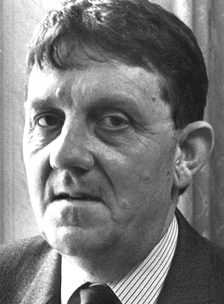
Health
Since the closure and redevelopment of Bridgend General Hospital in the 1990s, acute-care and accident and emergency services have been provided by the Princess of Wales Hospital. GP's surgeries are scattered throughout the town, as are dentists. There is also a large psychiatric hospital, Glanrhyd, near
Pen-y-Fai.
Culture
Shopping and visits
In the town centre the main shopping areas are the Rhiw Shopping Centre(containing Bridgend Market, Adare Street, Caroline Street, Derwen Road, Nolton Street,
Queen Street, Dunraven Place, Market Street and Cheapside (home of the Brackla Street Centre and future ASDA store.) Most high street names can be found in and around the town centre (with one or two exceptions), these areas are within close proximity to the bus and railway stations as are pay and display car parks. The prices at the car parks have been a contentious issue.
There are out-of-town shopping areas at Waterton, near the A473, Cowbridge Road and at Junction 36 of the M4, home to Sainsbury's and the Bridgend Designer Outlet and Odeon Cinema. Ample free parking is provided at the out-of-town sites.
Nightlife
There are numerous public houses and restaurants within the town centre. There is only one specific nightclub, Lava-Ignite although a few of the pubs double up as nightclubs or specifically create a nightclub atmosphere.
Bridgend town centre is generally safe although there are incidences of alcohol-fuelled anti-social behaviour like any other British town of Bridgend's size. CCTV is in operation throughout the town centre and there is usually a police presence of some form.
Music
Bridgend is home to plenty of punk, indie, screamo, metal & emo acts that are playing the clubs of the area, making it a prominent part of the South Wales music scene. This has drawn criticism from those who dislike the culture and the music, but, as it continues to draw, clubs and venues continue to hold such gigs in the area. The bands Funeral for a Friend, Lostprophets, Hondo Maclean and Bullet for My Valentine (formally known as Jeff Killed John) began their careers by playing venues in Bridgend such as the local Recreation Centre.
There are several smaller, intimate venues in and around the town centre including Bar Inc, PS Bar, The Railway Inn, The Barracuda and Saphire (formally known as Careys), which all host a number of open-mic nights.
Bryan Adams played to a 15,000 crowd at Brewery Field in the town centre on 2 June 2006. It is hoped the success of this concert will encourage others to play at the venue.
Sport
For many years, Bridgend was a hotbed of rugby union, but the rugby league code is now the town's primary sport with Celtic Crusaders now running the famous Brewery Field. The side are sometimes considered to be a replacement for the Celtic Warriors rugby union side after their controversial disbanding in 2004 but have built up a loyal following in their own right. The Crusaders will take part in National League One in 2008 after gaining promotion from NL2 in 2007 and are aiming to be in Super League by 2009.
In the regionalisation of Welsh Rugby Union in 2003, Bridgend RFC and Pontypridd RFC merged to form the Celtic Warriors. The area represented was massive and there are obvious communication and transport problems in sharing the respective grounds. The decision was made to move the club permanently to the Brewery Field because current Crusaders owner Leighton Samuel, who then owned the Warriors, was the primary leaseholder. Attendances at Warriors matches had been poor but were showing signs of recovery in 2004. But despite a strong finish to the Celtic League season, the region was disbanded to the shock of everyone involved. Professional rugby union in Bridgend and the valleys ended in an instant. The people of the areas involved now have to identify with teams outside the locality, support their semi professional Welsh Premiership team the Bridgend Ravens or some have even switched to rugby league.
Bridgend's second rugby league side is the Bridgend Blue Bulls, the current Welsh Conference champions and one the UK's most successful amateur clubs having won two national amateur titles in four years. The Bulls played at Coychurch Road but following the announcement about the setting up of the Celtic Crusaders they were invited to play at the Brewery Field by the owner Leighton Samuel. Unfortunately one year on they were unceremoniously refused permission to continue playing at the Brewery Field by Mr Leighton Samuel in the middle of the season. They were helped out at the last minute by Porthcawl RFC and staged the remaining 2006 home games there. Their home ground for 2007 is under discussion but it will not be the Brewery Field.
Bridgend Ravens are a new rugby union club in the town. Formed out of the ashes of the original Bridgend RFC in 2004 following Bridgend RFC's owner Leighton Samuel taking the decision to withdraw from the Rugby Union. The original company was finally wound up by its owner Leighton Samuel due to mounting debts in 2006. The Bridgend Ravens side are semi-professional, play in the Welsh Premiership and rent the Brewery Field from the Crusaders in the winter months. But most importantly they are debt free. Bridgend is also home to other rugby union sides including Bridgend Athletic RFC, Bridgend Sports RFC and South Wales Police RFC.
Bridgend has two main football teams, Bridgend Town F.C., and Bryntirion Athletic F.C., both sides play in the Welsh Football League First Division. Bridgend Town FC will need to relocate in the next few years from its Coychurch Road ground due to a planned road and housing estate on the ground in conjunction with the new ASDA store. Phil Dwyer, all-time record appearance holder of Cardiff City F.C., managed Bridgend Town for a short spell.
Bridgend also has local cricket clubs,
golf courses and tennis & bowls facilities at the local club, the Bridgend Lawn Tennis and Bowls Association.
Eisteddfodau
Bridgend hosted the National Eisteddfod in 1948 and 1998. The 1998 Eisteddfod was actually considerably nearer
Pencoed.
Media
Bridgend has its own commercial radio station: 106.3 Bridge FM, and is the base of Celtica radio. The main local paper is The Glamorgan Gazette. Recently, a website called Go-Bridgend has provided an aggregated news service; mainly focusing on local businesses.
Twinning
Bridgend has twinning arrangements with:
Langenau, Germany
Villenave D'Ornon, France
Famous people from Bridgend
Downtown Julie Brown (Actress)
Deddie Davies (Actor)
Mark Donovan (Actor)
Huw Edwards (BBC newsreader)
David Emanuel (fashion designer)
Bullet for My Valentine (Band)
Funeral for a Friend (Band)
Scott Gibbs (Rugby player)
Hondo Maclean (Band)
Michael Hall (Rugby player)
Robert Howley (Rugby player)
Gavin Henson (Rugby player)
Carwyn Jones (Senior Welsh politician)
Gareth Llewellyn (Rugby player)
Howard Marks (International drug-smuggler and author)
The Partisans (Band)
Gareth Thomas (Rugby player)
David John Williams (musician)
David Williams (crime writer)
Joe Williams (Musician and Teacher)
JPR Williams (Rugby player)
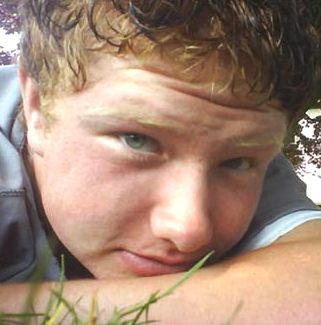
Nathaniel
Pritchard
Suicide
Incidents
The Bridgend suicide incidents are a set of suicides involving young people in the South Wales county borough of Bridgend. Reports speculated that a "suicide cult" was to
blame. As of February 19, 2008, there are 17 known deaths, though Police have found no evidence to link the cases.
History
Seventeen suicides in the county borough of Bridgend, population 132,000, have occured since the beginning of 2007. Seven were initially linked as part of a possible ‘cluster’. Six were not included in this 'cluster' because they were not known to each other and had clearly identifiable possible motives. James Knight, 26, hanged himself after breaking up with his girlfriend. Andrew O’Neill, 19, killed himself after being convicted of drink-driving and assaulting a police officer. What particularly alarmed the South Wales Coroner, Philip Walters, about the other seven victims was that they knew each other, gave no reasons and left no notes. Since then there has been the death of Nathaniel Pritchard on February 13, that police said was not linked to any of the other deaths, but Kelly Stephenson, found hanged a few hours later, was his cousin. 16-year-old Jenna Parry was discovered on February 19. Her death was said to have "no link" with the others.
Dale Crole, 18, hanged himself in a derelict warehouse in neighbouring Porthcrawl on January 5 2007. His friend David Dilling, 19, hanged himself on February 18. Thomas Davies, 20, who knew both of them, hanged himself in a park a week later. Zachary Barnes, 17, who hanged himself on August 11, is also believed to have been known to other victims. In December Liam Clarke, a friend of Crole, was found hanged in a park. Gareth Morgan, 27, who knew Clarke, died on January 5 this year. Natasha Randall, 17, posted a tribute message to Clarke on her Bebo page two days before she hanged herself on January 17. On February 13 Kelly Stephenson from Bridgend was found hanged while on holiday in Kent, a few hours after her cousin Nathaniel Pritchard, 15, was declared dead following an attempted suicide by hanging in Bridgend. The two cousins were said to be “very close” and on one of Ms Stephenson’s Bebo pages there were tributes to Clarke, Randall and Barnes.
South Wales Police have been downplaying the deaths and saying that they are in no way connected and that there is no suicide pact. The Member of Parliament for Bridgend, Madeleine Moon has also said that there is no connection between the deaths.
Criticism of media coverage
The parents of one of the dead accused the media of "glamorising ways of taking one's life to young
people". The MP for the Bridgend area said that the media were "now part of the problem". Mrs Pritchard added: "We have lost our son and the media reporting of this has made it more unbearable".
Bridgend
suicides inquiry widened by coroner - 26 February 2008
The
coroner for Bridgend, where 14 young people have hanged
themselves in the past year, is investigating another nine cases in
neighbouring areas.
All
nine have apparently taken their own lives in the past two months.
Stuart
Griffiths, the coroner's officer, said: "The deaths in the
neighbouring area are not all young people but each one is a tragedy for
the person and their families.
"People
hear about hangings and then, if they are feeling suicidal, they think
of hanging as a way out."
He
said the deaths were being examined as individual cases.
Phillip
Walters, the Bridgend and Glamorgan Valleys coroner, has already ruled
out a link between all 14 hangings in the Bridgend area, which involved
people aged between 17 and 27 and fuelled fears of copycat suicides
encouraged by internet websites.
A
task force has been set up to investigate the deaths and South Wales
Police have called in their major crime unit to re-examine the cases.
Mr
Walters has opened inquests on all nine new cases in the past two
months.
All
were adjourned for more inquiries and it was understood that some
computers were being examined.
An
inquest into the latest case was opened Wednesday.
Neil
Rowley, 29, from Trebanog in the Rhondda Valleys, was found hanged from
a tree in woods near his home. He had recently moved back in with his
parents after splitting from his girlfriend.
The
other eight cases all involved hangings at or near their homes.
They
are:
-
Cherell
Ardle, 13, of Ton Pentre, Rhondda, on Dec 3;
-
Paul
Williams, 37, of Treorchy, Rhondda, on Christmas Eve;
-
Dennis
Hughes, 53, of Rhydfelin, Pontypridd, on Dec 28;
-
Paul
Briggs, 18, Ynyshir, Rhondda, on Jan 6;
-
Nigel
Davies, 44, of Ynysybwl, Jan 19;
-
Clare
Jackson, 35, of Porth, Rhondda, on Jan 24;
-
Kelly
Ball, 25, of Beddau, Pontypridd, on Jan 25;
-
Robert
Wiggins, 36, of Ton Pentre, on Feb 3.
Another
Hanging - But 'No Suicide Cult' - Sky
News February 19, 2008
A 16-year-old
girl has been found hanging from a tree near Bridgend - she is
believed to be the 17th young person to have committed suicide in the
area.

Jenna
Parry
A
man walking his dog discovered Jenna Parry's body in the village of Cefn
Cribwr, five miles from the Welsh town. South Wales Police
say there is no evidence of a "criminal, cult or internet"
link between the deaths.
Assistant
chief constable Dave Morris described it as a "cluster" of
deaths, and said similar spates of suicide had taken place in the US and
Ireland in the past. He said the youngsters all used social
networking websites, like Bebo, but there was no suggestion of any link
between the deaths through the sites. "What we have found is
that these are vulnerable young people, and taking one's own life may be
becoming an acceptable option to young people for issues that they are
facing," he added.
Last
week, two cousins were found dead within hours of each other in
separate, apparently unconnected, incidents. Nathaniel Pritchard,
15, and 20-year-old Kelly Stephenson lived on the same street.
Nathaniel's mother Sharon told the press conference her son might have
been influenced by the media coverage of the deaths, and wanted to get attention.
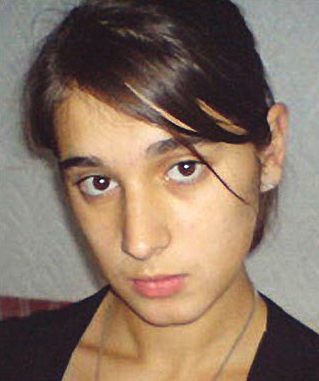
Kelly
Stephenson
She
said: "We never believed there was an internet
pact and it certainly had nothing to do with living in Bridgend.
Bridgend is a nice place to live."
The
Bridgend branch of Samaritans has seen a rise in the number of calls
from under 25s across Wales recently.
Branch
director Darren Matthews said: "We are concerned that these
suicides are still occurring and are continuing to support the
community.
The
Bridgend Samaritans can be reached on 01656 662333, or people can call
in at 2 Green Street, Bridgend, or email jo@samaritans.org.
Childline
can be contacted on 0800 1111 and Papyrus, specialists in preventing
young suicide, can be reached on 01282 432555.
External
links
|
Adelaide
Aden
- Yemen
Afghanistan
Africa
Alaska
Algeria
Amsterdam
Antarctic
- Antarctica
Arctic
- North
Pole
Argentina
Asia
Athens
Australia
Austria
Aztecs
- Mexico
Bahamas
Bangladesh
Baghdad
Bahrain
Barbados
Beachy
Head, England
Belgium
Berlin
Bermuda
Black
Rock Desert, Nevada
Bohemia
Bolivia
Bonneville,
Utah - History
Brazil
Brighton
- West Pier
British
Columbia
Bulgaria
Burma
Canada
Canary
Islands
Cape
Hope
Cape
York - Au
Caribbean
- Central America
Cayman
Islands
Chichester
Harbour
Chile
China
- Beijing
Columbia
- S. America
Columbo
- Sri Lanka
Cowes,
Isle of Wight
Croatia
Cuba
Cyprus
Czechoslovakia
Darwin
- Australia
Daytona
Beach - Florida USA
Denmark
Dubai
Eastbounre
Pier, England
Earthquakes
Egypt
Equador
Equator
Europe
Falkland
Islands
Falmouth,
Cornwall
Fiji
Finland
Florida
France
Galapagos
Islands
Geography
Links
Geography
Records
Geography
Resources
|
Geography
Statistics
Germany
Gibraltar
- Links
Greece
Greenland
Hampshire
Hawaii
Holland
- Volendam
Hollywood,
California, LA
Hong
Kong
Hungary
Hurricanes
Iceland
India
- Mumbai
Indonesia
Links
Iran
Iraq
Ireland
Isle
of Man
Isle
of Wight
- The
Needles
Israel
Italy
Jakarta
- Java
Jamaica
Japan
Jordan
Kent,
England - Sandgate
Kenya
Korea
Kuwait
Kyoto
- Japan
Las
Vegas -
Lebanon
Libya
Life
on Earth
London
- Big
Ben
London
Eye - Madame
Tussauds
London
Houses
Parliament
London
- Buckingham
Palace
London
- Old
Bailey
London
- Overview
London
- The City
London
- Tower Bridge
London
- Trafalgar
Square
Luxembourg
Malaysia
Malta
Maya
Empire -
Central America
Melbourne,
Australia
Mexico
Middle
East
Monaco
Morocco
Mountains
Naples-
Italy
National
Geographic
Nepal
Nertherlands
- Eindhoven
New
York
New
Zealand
Nigeria
North
Africa
Norway
Nova
Scotia
Oceans
and Seas
Oman
Pakistan
Palermo
- Sicily
Palestine
|
Palma
- Malorca
Panama
Canal - Links
Paris
Pendine
Sands - Carmarthen
Peru
Philippines
Pisa
Planet
Earth
Poland
Port
Moresby - PNG
Port
Said - Egypt
Portugal
Puerto
Rico
Qatar
Quebec
Rio
de Janeiro
Romania
Rome
Russia
Salt
Lake City - Utah
Saudi
Arabia
Scotland
Senegal
West Africa
Singapore
Somalia
South
Africa
South
America
Southampton
Spain
- Espana
Sri
Lanka - Links
Stonehenge
Suez
Canal
Sudan
Surrey,
England Index
Sussex,
England Index
Sweden
Switzerland
Sydney,
Australia
Syria
Tahiti
- Polynesia
- Links
Taiwan
Thailand
Tokyo,
Japan
Tonga
- Polynesia
Toronto
Trinidad
- Lesser Antilles
Tsunami
Tunbridge
Wells, England
Tunisia
Turkey
UAE
- United Arab Emirates
UK
Statistics
Ukraine
United
Kingdom
United
Kingdom -
Gov
USA
Venezuela
Venice
Vienna
Vietnam
Volcanoes
Wales
Washington
D.C.
Wealden
iron industry
Wendover,
Utah
World
Peace Supporters
Yemen
Yugoslavia
Zurich
|

Solar
Cola drinkers care about climate chaos
...
..
Thirst for Life

(330ml
Earth can)
|






